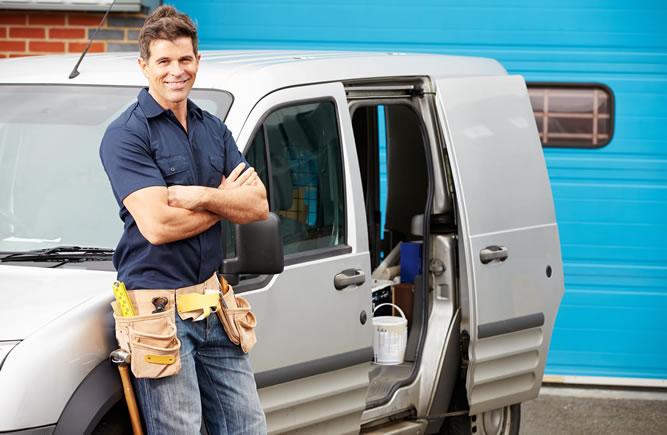Electrical Safety Certificate Cost
Last updated 16th September, 2025
Need to know the cost of an Electrical Safety Certificate - also known as an NICEIC certificate?
The price of an EICR certificate ranges from £125 to £300, depending on the size of your home.
Find out about obtaining an electrical test certificate and what factors affect an EICR certificate cost.
Continue below!
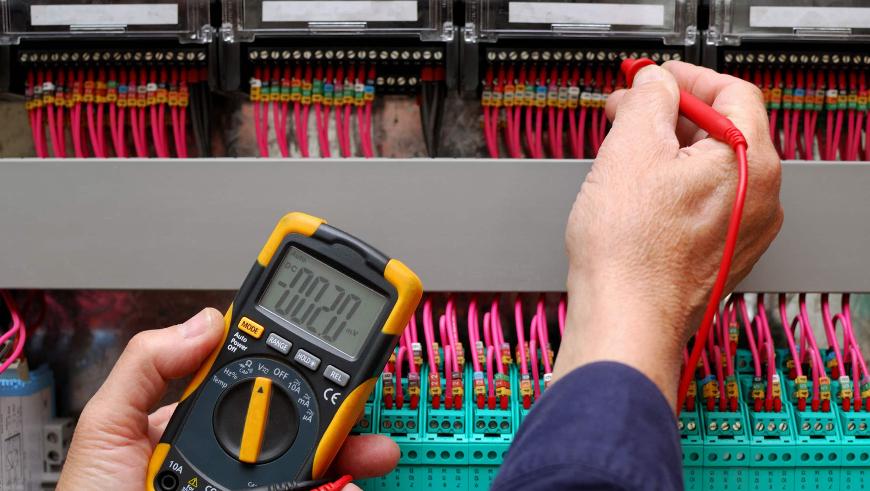
How Much is an Electrical Safety Certificate?
Let's get straight to the point:
The average cost of an Electrical Safety Certificate starts from £125 for a one-bedroom flat, while a five-bedroom detached home could cost up to £300 or more.
What does the cost of an Electrical Safety Certificate include?
The above Electrical Safety Certificate quote includes the cost of hiring a competent electrician to perform checks on all electrical systems in your property, which will be recorded in an Electrical Installation Condition Report (EICR).
If everything is in safe working condition and compliant with electrical regulations, you will be handed an Electrical Safety Certificate for your records.
Does the cost of an Electrical Safety Certificate differ for landlords?
If you are a landlord, it is your obligation to check that the sockets, light switches, wiring and consumer board are safe. Electrical Safety First (formerly known as the Electrical Safety Council) also recommends an inspection report of electrical installations to be carried out every 5 years or whenever there is a change of tenants (whichever is sooner).
A Landlord Electrical Safety Report Certificate is technically a report, but is generally referred to as a certificate.
The typical cost ranges from £100 to £230 for a flat and £150 to £300+ for a house, depending on the size and the condition of the wiring.
Keep in mind...
Reports taken in older homes may cost more, especially if they have dated wiring, as this can cause a significant number of faults and may delay the process. These prices are based on homes with a 10-circuit or fewer fuse board, which is what the majority of residential properties have.
Table of Contents
- How much is an electrical safety certificate?
- Additional costs of electrical inspections
- Labour cost to get an electrical safety certificate
- What does an electrical safety certificate involve?
- Can I complete an electrical safety certificate myself?
- Who needs an electrical safety certificate check?
- Different types of electrical safety certificates
- What are the benefits of having an electrical safety certificate?
- Will not having an electrical safety certificate affect the sale of my property?
- FAQs
- How to find and hire an electrician for a safety certificate
- Sources
EICR Prices
Below are some estimated costs of Electrical Safety Certifications:
| Job Description | Avg. Cost |
|---|---|
| A Landlord Electrical Safety Report Certificate | £100 - £300 |
| Electrical Installation Condition Report (EICR) | £125 - £300 |
Here is a breakdown of the Electrical Safety Certificate costs for different-sized homes:
| Type of Property | Average Cost |
|---|---|
| 1 Bedroom Flat | £125 |
| 2 Bedroom Flat | £150 |
| 2 Bedroom House | £175 |
| 3 Bedroom House | £200 |
| 4 Bedroom House | £250 |
| 5 Bedroom House | £300+ |
Additional Costs of Electrical Inspections
Some additional costs may be incurred through optional PAT testing or mandated extra work to ensure the safety of an electrical system.
While PAT testing is not usually a requirement of electrical testing in the UK, some landlords and homeowners may want to check the safety of their mobile equipment as well. The cost of PAT testing is generally £1 to £2 per item, with a minimum call-out fee.
If electrical work needs to be carried out to make the fixed wiring around the house safe, the typical consumer unit replacement cost is between £500 and £600, while the cost of rewiring a house can be anywhere from £1,500 to £6,500.
Here is a breakdown of additional costs related to electrical safety checks:
| Job Description | Average Cost |
|---|---|
| PAT Testing | £1 - £2 per electrical item |
| Part P Notification Local Council | £200 - £300 |
| House Rewiring | £1,500 - £6,500 |
| Fusebox Replacement | £500 - £600 |
| Plug Socket Replacement | £140 - £340 |
| Light Switch Replacement | £75 - £150 |
EICR Cost Breakdown Calculator
The Typical Costs Of An Electrical Installation Condition Report (EICR) - Total Cost: £200
Materials
£10
Tradesmen
£190
Waste Removal
£0
Labour Cost To Get an Electrical Safety Certificate
Now, let's explore the labour costs and timeframes of an Electric Safety Certificate. To obtain a legally-compliant Electric Safety Certificate, you need to hire a qualified electrician to conduct an Electrical Installation Condition Report.
How much does an electrician charge for an Electrical Safety Certificate?
Electrician prices typically vary across the UK, with London and the South East costing more per hour and per day than those elsewhere.
On average, you should expect to pay a daily rate of around £125 to £300 for 2 to 4 hours' work. The price may rise for larger properties and could take up to a full day, especially in older properties, which may have outdated wiring and will require longer checks.
Here are some typical timeframes:
| Type of Property | Avg. Time |
|---|---|
| 1 Bedroom Flat | 2 - 3 hours |
| 2 Bedroom Flat | 2.5 - 4 hours |
| 2 Bedroom House | 3 - 4.5 hours |
| 3 Bedroom House | 4 - 5 hours |
| 4 Bedroom House | 4.5 - 6 hours |
| 5 Bedroom House | 5 - 7+ hours |
What Does an Electrical Safety Certificate Involve?
To be awarded an Electrical Safety Certificate, a full electrical report must be conducted by a qualified electrician who will test all electrical installations in the household.
During the inspection, there may be a short power outage while circuits are tested. The electrician will most likely inform you of this beforehand.
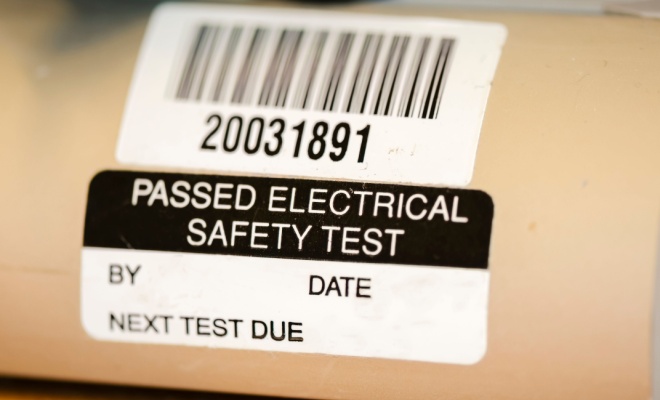
They may also ask you several questions about when electrical installations were fitted and whether you have noticed any electrical issues.
You should try to be as honest as possible when answering the questions, as this will help to speed up the process.
What will the electrical inspection report involve?
- Checking the condition of earthing and bonding.
- Testing the fuse board or consumer unit to establish whether replacement is required.
- Conducting tests on wall outlets and switches to make sure they are operating properly, and there is no risk of electrocution or shock.
- Examine light fittings to ensure they are safe and working as they should.
- Checking the type of wiring used, as any outdated wiring, such as lead, fabric, and black-rubber, must be replaced with PVC insulation.
- Finding any wear, tear or damage on any installations throughout the home to prevent future issues.
- Looking for any noticeable changes regarding the use of premises which require upgrades.
- Make a final report on whether the electrical installations are satisfactory, which requires no work to be done or unsatisfactory, which means work must be carried out for the property to be deemed safe.
Can I Complete an Electrical Safety Certificate Myself?
Unfortunately, there is no budget DIY solution when it comes to electrical projects.
Hiring a professional electrician who can self-certify their work is, in fact, probably the cheapest option.
It is also a necessity to hire a person who is registered with a competent person scheme, as they can self-certify without having to call a private building inspector or a local council representative.
Who Needs an Electrical Safety Certificate Check?
It's a legal requirement for landlords to have regular electrical safety checks on their properties.
In addition, some homeowners may choose to pay for an EICR to ensure the safety of their home, especially in advance of selling it.
Landlord Obligations
Under the current regulations:
- Landlords must have electrical tests conducted every 5 years.
- It is strongly recommended that an electrical installation be checked every time a new tenant enters the property.
Electrical safety checks are carried out to help maintain the safety of a rented property, reducing the possibility that tenants will be harmed by the electrics within their home.
Frequent electrical checks will ensure that all installations meet the correct standards and protect both landlords and tenants.
This is a serious matter, with landlords facing fines of up to £30,000 if they do not comply. Property insurance may also be cancelled, depending on the extent of any faults or damage found.
The regulations that govern landlord electrical safety responsibilities are found in the Electrical Safety Standards in the Private Rented Sector (England) Regulations 2020.
These regulations are specific to England, but there are similar laws in Scotland and Wales. Northern Ireland is a little more complicated, so seek advice from a professional there if you're unsure.
HMOs
There are more rules around Houses in Multiple Occupation (HMOs) when it comes to electrical safety.
If you're a landlord, you must:
- Obtain a Domestic Electrical Installation Certificate.
- Obtain an electrician's Periodic Inspection report.
A copy of this report should be given to all tenants to ensure that they understand the current state of the electrical appliances and whether any improvements must be made to protect them.
While landlords of HMOs must get an EICR every 5 years, you will often find that local authorities are more stringent than that, requiring more frequent checks and enhanced electrical scrutiny.
So, it's important to understand the specific responsibilities for your local authority. You can usually find these details on a council's website, or you should call them to find out exactly what you need to do.
HMOs will have to stand up to more scrutiny, including proving regular maintenance of electrical installations.
Some local authorities will also make regular PAT testing of appliances part of their licensing arrangements.
Although these electrical safety obligations can seem cumbersome for landlords, they protect both parties and are an unavoidable element of owning properties to rent out to others.
Electrical Safety Regulations
Building regulations (Approved Document P) cover the laws on electrical safety in dwellings. They state that electrical installations around the home must be protected against overheating, damage, and other risks.
They also need to make sure there is no risk of electric shock or fire hazards to those living in the property and the surrounding areas.
Under the Institution of Engineering and Technology (IET) wiring regulations, clear information must be provided regarding the electrical appliances. This includes an electrical safety report, which must be conducted regularly to ensure all electrical devices are safe and working as they should.
The law also states that when a new installation is put in place or repaired, then an electrical installation condition report must be conducted by a competent person within 5 days of the changes.
In 30 days from the report date, a buildings regulation compliance certificate should be sent out, and another copy should be passed to the building control body.
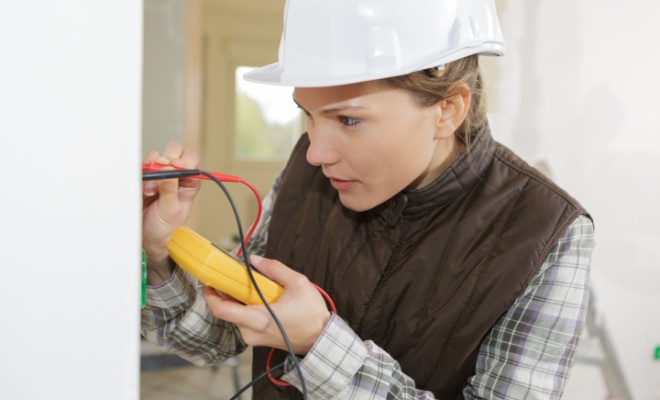
What happens if the work is not completed by a registered competent person?
In this case, a third party will need to be called in to inspect the work. If this is not possible, then a building control body must be informed. They will then inspect and test the newly-finished work or hire someone to do this for them, along with conducting the electrical safety report.
They will then appoint a competent person to complete the job. Once it is complete, a building regulations completion certificate will be handed to the homeowner.
EICR for Homeowners
A homeowner may require a Domestic Electrical Installation Certificate and an Electrical Installation Condition Report if they plan to sell or rent their home. However, it is not a legal requirement to do so.
This is usually requested by an appointed estate agent who may refuse to let out or sell the home if electrical installations in the property are not compliant with building regulations.
It can also be used to speed up the buying process by reassuring potential buyers that the property is safe and the electrical installations are up to date – helping them to avoid any additional costs when moving in. Buyers may also conduct their own electrical tests for complete assurance before investing in the property.
Different Types of Electrical Safety Certificates
Whether you're a homeowner having work done at home or a landlord renting out a house or flat to tenants, there are several reasons why you might need an Electrical Safety Certificate.
If you have no previous experience of having electrical work carried out in your home, knowing which type of certificate you should get can be a bit confusing.
To help you understand electrical safety certificates, here are the four main types of electrical certificates or reports:
- Electrical Installation Certificate.
- Minor Electrical Works Installation Certificate.
- Electrical Installation Condition Report.
- Part P Notifications.
Electrical Installation Certificate
An Electrical Installation Certificate (EIC) states that an electrical installation is safe to use and is required for all major installations in the home, such as new consumer units and any work requiring new circuits or any electrical work in special locations such as bathrooms.
Landlords are required to have their electrical equipment checked every 5 years or when a new tenant moves in to receive an up-to-date certificate.
A homeowner may also require if they are planning to sell their home, as they must provide proof to the estate agent and potential buyer that all electrical elements are safe and compliant.
An Electrical Installation Certificate report takes around 2 to 4 hours and could cost anywhere between £100 to £300, with the highest-end aimed at homes with more than 4 bedrooms.
Minor Electrical Works Installation Certificate
A Minor Electrical Works Installation Certificate is similar to an Electrical Installation Certificate (EIC), in that it’s valid for up to 5 years, but is only used for electrical work such as additional sockets or light fittings not in special locations.
What's the cost?
This could take around 1 to 2 hours with a charge of £60 to £95, depending on the amount of work required.
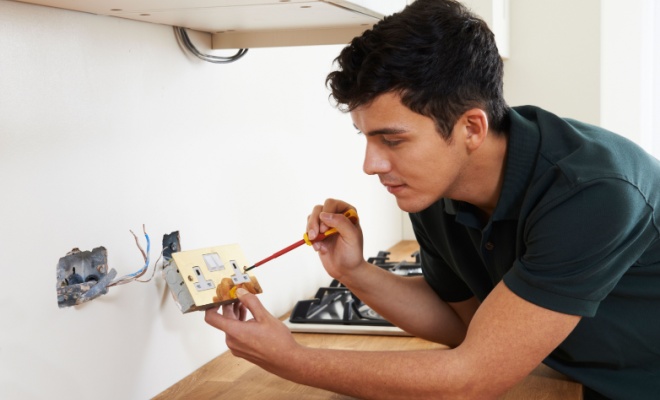
Electrical Installation Condition Report
An Electrical Installation Condition Report (EICR) is something landlords need before a new tenant moves in. But homeowners moving into a new home should ideally get one every 3 to 5 years, especially if living in an older property.
An EICR tends to take around 3 to 4 hours, and the charge could be anywhere from £125 to £300 depending on the size of the home.
Part P Notifications
Many electrical projects need Building Control Notification under Part P Notifications. This can be done by employing a qualified electrician who can "self-certify" their work or by notifying Building Control yourself and paying a fee for an inspection, which will vary from council to council and will also depend on the extent of the work.
How long will an inspection take?
An inspection will usually last from 90 minutes to 2 hours, although a larger house may take longer.
Once this is complete, you should receive a Building Regulations Compliance Certificate to prove the work is compliant. When making these changes, you cannot get an electrician to certify work you have carried out yourself - this is illegal.
What Are the Benefits of Having an Electrical Safety Certificate?
The benefits of an electrical safety certificate check as a landlord are primarily that:
- It makes you compliant with the law as a landlord.
- It will help you avoid fines of up to £30,000 for not being compliant.
If you don't pay for an EICR and perform regular electrical maintenance on your rental properties, your local authority will take action.
This could begin with a Remedial Notice demanding that you get an EICR check within 28 days and/or carry out any necessary remedial works to make the property compliant.
After this, the local authority could undertake emergency work themselves, which would then be billed to the landlord. This is likely to lead to a large fine as discussed above, especially if you continually breach your responsibilities.
For homeowners, the benefits of getting an EICR check include:
- Personal peace of mind that your electrics are safe.
- Proof that the electrics have been checked in case of a sale.
Will Not Having an Electrical Safety Certificate Affect the Sale of My Property?
While you are not legally required to provide a buyer with an electrical certificate, it can actually speed up the sale of your property.
This is because it will offer reassurance to the real estate agent that the property is compliant. It will also reassure potential buyers that the property is safe and up to date on electrical fixtures, which means they will not have to pay for electrical checks, repairs or replacements themselves.
In some instances, a buyer may perform their own electrical tests anyway.
FAQs
How to Find and Hire an Electrician for an EICR Certificate
The average cost of hiring an electrician is around £40 to £60 an hour, although this will vary depending on the job itself and their experience.
Before hiring an electrician to certify your electrical fixtures, you could check that they have the right qualifications, such as a Level 3 NVQ Diploma in installing electrotechnical services or a similar qualification.
You also need to make sure that they are members of a Competent Person Scheme such as the National Inspection Council for Electrical Installation (NICEIC) or the Electrical Contractors’ Association (ECA). Licensed members of professional bodies are all registered for ‘Part P’ under the building regulations, which means they are qualified to conduct all electrical installation checks.
Another important thing to look out for is whether they have public liability insurance, as this will protect both you and them if any mistakes or accidents occur on the job.
Sources
https://www.gov.uk/government/news/new-tougher-electrical-safety-standards-to-protect-private-tenants
https://england.shelter.org.uk/housing_advice/repairs/electrical_safety_in_rented_homes
https://www.electricalsafetyfirst.org.uk/guidance/advice-for-you/landlords/
https://www.electricalsafetyfirst.org.uk/find-an-electrician/periodic-inspection-explained/guide-to-condition-reports/
https://www.sparksdirect.co.uk/blog/a-simple-guide-to-electrical-installation-condition-reports-eicr/
https://www.alliedelectrical.co.uk/blog/electrical-installation-condition-reports-explained
